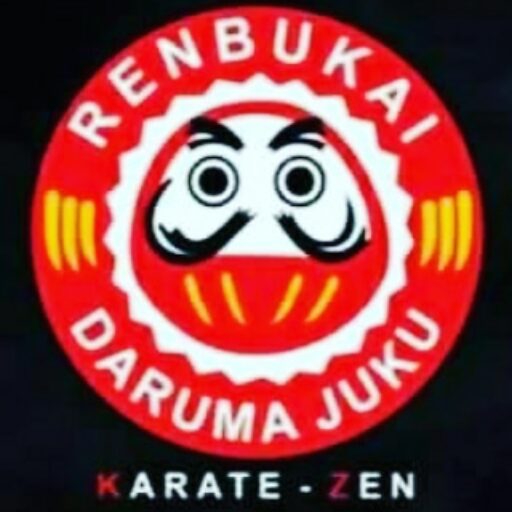Why Renbukai ?
Now a day’s not many style practice Sports Karate and Full Contact Karate simultaneously. Some style that practice Karate as a sport doesn’t work upon full contact style and others who do full contact thinks sports Karate as a weaker form. Thus, the Karate as a whole is not flourishing.
Now the problem is that those people who want to adopt Karate as their profession and future are left in confused state because full contact style is not recognized by Japan Karate Federation, JKF. Hence it becomes increasingly difficult for upcoming Karate practitioners to enter on the big stage and work for the betterment of Karate.
So, What is the solution?
The answer to the above question is “Renbukai”. Only Renbukai practices all the forms of Karate –
Sundam kumite (Sports Kumite)
Bogu Kumite (Armored Kumite)
Jisshin Kumite (Full Contact Kumite)
Kata (Choreographed patterns of movements)
Thus, it can be easily concluded that Renbukai is the complete form of Karate.
Renbukai for Everyone (Renbukai is intelligent Budo Karate)
Renbukai is a kind of style which is fit for everyone. It is not restricted to any age-group or sex. Children, youths and adults all can perform and practice equally well. Renbukai has no boundaries. It is simply boundless.
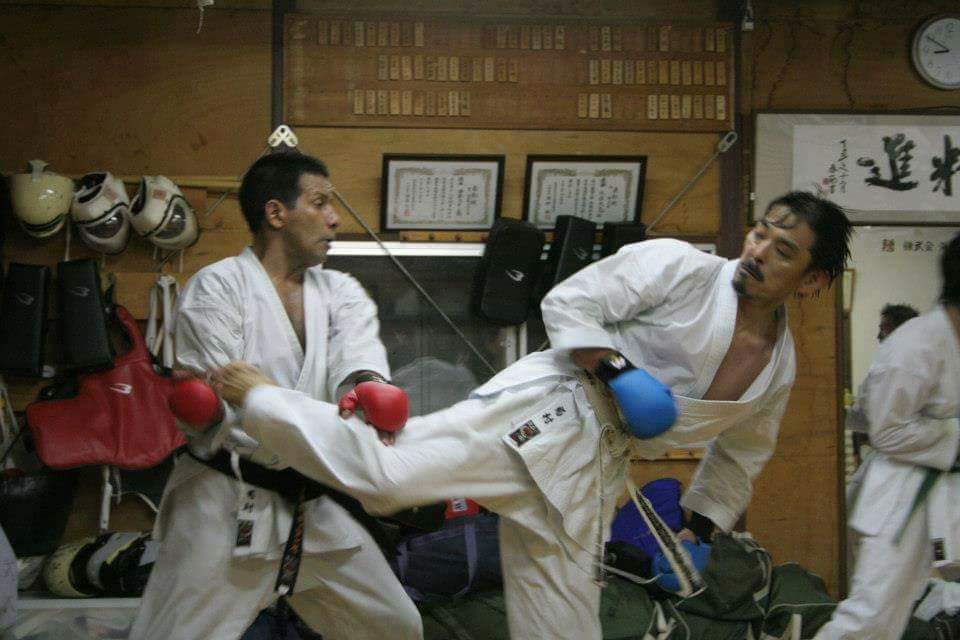
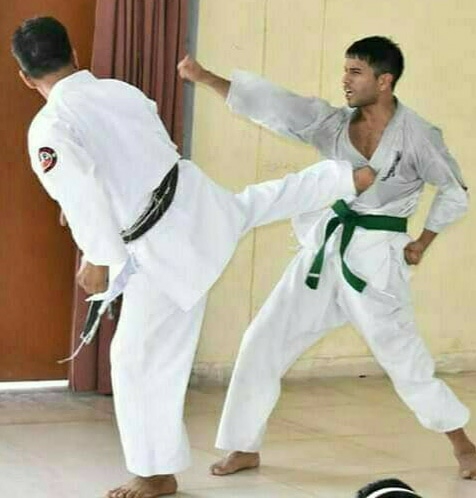
Thus, it can be easily concluded that Renbukai is the complete form of Karate.
Renbukai for Everyone (Renbukai is intelligent Budo Karate)
Renbukai is a kind of style which is fit for everyone. It is not restricted to any age-group or sex. Children, youths and adults all can perform and practice equally well. Renbukai has no boundaries. It is simply boundless. As Renbukai includes all the three form of kumite i.e Sundam Kumite, Bogu Kumite Jisshin Kumite and kata one can only say that it is for everyone. Those who prefer Karate as a sport can work upon sundam kumite and those who love full contact fight can practice Jisshin Kumite. Renbukai also take precautionary measures during kumite thus armored kumite or bogu kumite has also been introduced.
In Bogu Kumite, one can fight in full contact style but it includes the guards thus avoiding the injuries and making it safer for everyone. It is an intelligent step as one can feel the complete degree of reality during kumite without getting or bringing miss happening.
Lastly, it wouldn’t be wrong to say Renbukai is for all the people who love Karate. So Renbukai Style is intelligent Budo Karate Style.
Karate
The purpose of Karate is to prepare the Karate-ka for life and not merely for physical battle. The simple truth is that, of the many challenges we will face in the world, few will call for a strong kick or a timely punch. Although a strong, healthy body is important to well-being and success, a strong, disciplined mind is paramount. Kata is central in developing these qualities, and this is what makes it particularly relevant to everyday life.
One of the challenges of life is to know how to set goals and priorities. Once these have been established, realization becomes the challenge. Education, work, relationships, all require sustained effort. Being able to concentrate and focus your mental energies are prime ingredients for success. For example, suppose that you decide to become a lawyer, long hours of study are required, often when you are tired or when you would rather be doing something else. Often, your eyes will be on a page of text, but your mind is not there, having wandered off to other thoughts. You may have the intent, and you may put in the time, but because of the lack of concentration and focus, progress will be slow and tedious.
We are all willing to accept that to have a strong body, we must do physical exercise. To have a strong mind, we must also exercise systematically and consistently. In kata, the student must first learn the movements. This is as much a mental chore as a physical one. Each time you practice kata you are exercising concentration, striving to attain the harmony of body and mind that allows you to focus your energy, or ki. As you progress in your training, and the katas become more complex, deeper concentration and focus are required. The mind, like the body, responds to this progressive training, becoming stronger through work and repetition.
Some students feel bored or oppressed by the detail and exactness required in the polishing of kata. Students feel, “What difference does it make if my hand position is not exactly like the instructor showed? No one will notice if my leg is slightly bent in that stance too.” However, it is precisely the attention to detail demanded by kata that cultivates self-discipline, making yourself repeat something until you get it right. Concentration and self -discipline are both attitude and skill. They can be learned, and they must be practiced.
In Japan, Sadaharu Oh, the Japanese Babe Ruth, became the most well-known and popular public figure when he broke Henry Aaron’s career record for home runs in basebail. Mr. Oh as he is known, was almost on his way out of baseball early in his career, with the fans ridiculing his tendency to overswing and strike out. He then met Mr. Arakawa, who became his personal batting coach, in one sense, but, in reality, his sensei. On one level, Arakawa-san changed the mechanics of Mr. Oh’s swing, particularly by teaching him a one legged stance, which we call tsuruashi dachi in Karate, Instead of taking batting practice in the cage like everyone else. Mr. Oh would spend long hours in front of a mirror with his bat, practicing his stance! Arakawa-san even had him learn tai, the art of drawing a sword. A baseball player doing kata! Mr. Oh says that this “spirit-discipline” became the key not only to his baseball success, but to a whole renewal of his life in many directions. The discipline and concentration developed through the practice of kata will permeate your every effort, no matter what you do. It becomes a part of your way of being.
In Karate, no one will tell you what specific goals to pursue in life. Once you have made choice, it is the purpose of your Karate training to help you focus all your energy and talents on the accomplishment of your goals. Kata is a vehicle for developing that ability, which will help you in every aspect of living.
Kumite
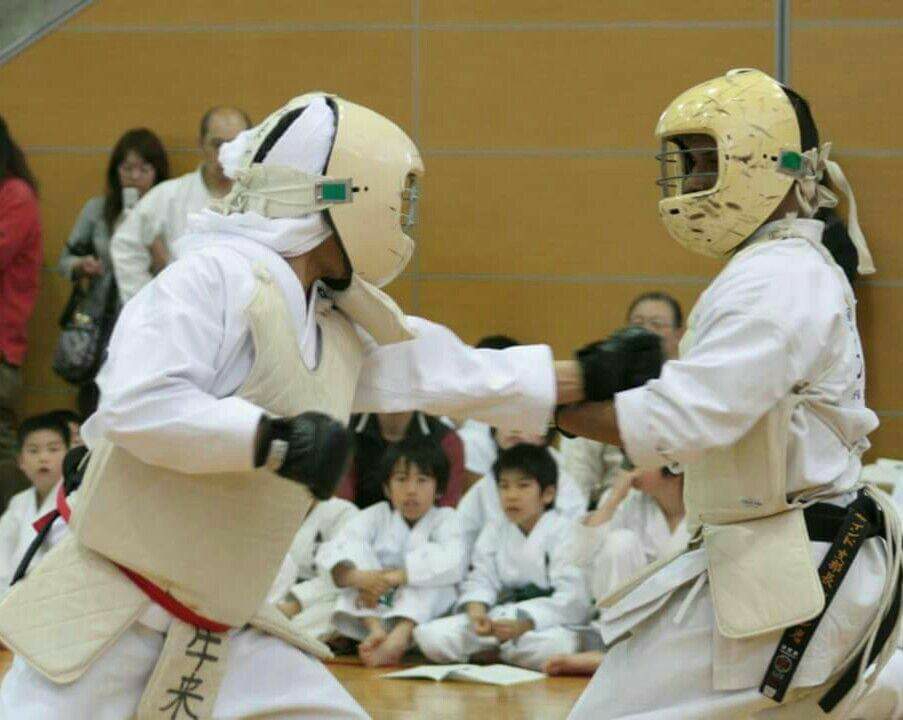
Kumite, along with basics and kata, completes the triad of Karate training. Karate is a martial art developed and refined through the centuries as a form of unarmed physical combat, used often by an unarmed citizenry to defend itself against foreign occupation forces and bandits.
Today the martial spirit lives on with the practice of kumite, and the benefits of kumite to the modern practitioner are many. Kumite practice hones self-defense skills. It brings together all of the techniques and skills the Karate-ka has acquired, sharpening his timing and reflexes, increasing endurance and building confidence. The practice of kumite inspires bushido (non-quitting spirit) and trains the mind to remain calm and focused under pressure.
The approach to kumite varies greatly among styles. In some, a white belt will take part in full free fighting soon after joining the school. Other styles engage in a free fighting, but instead practice prearranged fighting. The approach of the system is to introduce the student to fighting in a way that promotes the development of strong fighting skills, enhances confidence, and provides for a safe and supportive atmosphere. In Renbukai Karate, a student does not engage in full free fighting until he or she attains the grade of yellow belt. However, the practitioner embarks on the building of fighting skills from his very first class.
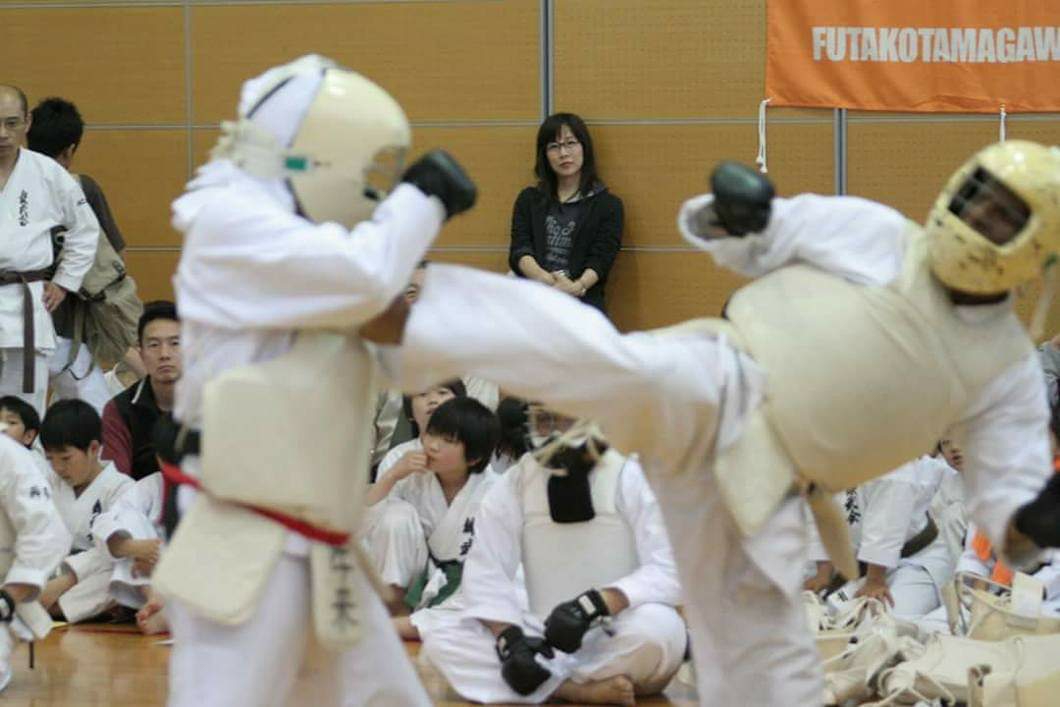
Basic techniques are the foundation of a practitioner’s fighting arsenal. Strong blocks, kicks and punches are the rudiments of kumite. Though many basic techniques are modified for free fighting purposes, it is only after long hours devoted to the repetition of basics that the Karate ka can forge his hand and leg techniques into dependable weapons.
Kihon Kumite: Consists of a number of prearranged movements to be performed by an individual. The purpose of kihon kumite is to bridge the gap between basics and free fighting. Practical, effective fighting combinations are learned, with the basic blocks, hand techniques, and kicks adapted and modified to improve their fighting efficiency. For example, when utilizing the reverse punch in kumite, the reaction hand is not pulled all the way back to the side as it is in informal practice. Rather, it is drawn next to the chin to protect the face, power thus being sacrificed for defense. Stances are also modified to increase flexibility and mobility.
Yakusoku Kumite: These too are prearranged movements, but yakusoku kumite is practiced with another person, with each partner alternating rapidly between offensive and defensive techniques. In the yakusoku kumite, the student is exposed to controlled contact, applies the blocks he has learned in a realistic combat situation, and learns to attack and counter quickly and forcefully. Practicing with a partner also teaches the importance of proper timing and maai (the distance between yourself and your opponent).
Tanshiki Kumite: This form of fighting is a modified form of full free fighting, in which the instructor limit the techniques that can be used. For example, one of the participants may be directed to kick only, while his opponent uses only hand techniques, or one side may just block, while the other side uses two or three specified kicks. The student gets concentrated exposure to a specific technique (for example, the roundhouse kick) and develops his blocks and counters to a point where they are automatic. For new students, it is also a way to learn control and avoid injury.
Jiyu Kumite (free fighting): In full free fighting, the student utilizes his/her skills under conditions that most closely simulate actual combat. In a Renbukai system, full contact is permitted to the body. Jiyu Kumite is viewed as a chance for students to exchange techniques, to learn from each other beyond the physical demands of kumite (agility technique), it is an important way to test the degree of mental control and discipline that the student has achieved.
Precautions
Free fighting offers the Karate-ka many opportunities to develop his skill, courage, and bushido spirit. On the other hand, if not properly controlled, it also can lead to discouragement and injury. It is therefore of paramount importance that there be close supervision of kumite at all times and that the students be carefully instructed as to the true purpose of kumite and the proper attitude required.
In actual combat, the importance of winning is obvious. In kumite, however, it is necessary for the student to understand what winning means. Karate is an endeavor of personal growth. The Karate-ka who at every moment is doing the best he or she can is a winner. When students compete in kumite, by putting forth their best effort, they can spur each other to greater effort. While on the one hand they are competitors, on the other they are partners in learning and growth.
Renbukai-
India gives a major concern to ZEN Meditation which is a very important part of our Daruma juku- Karate-Do Renbukai .
Real meaning of our Daruma juku logo –
Nana korobi ya oki ( if you fall down seven times , get up eight time.
This is the most expression of Daruma Daishi , who was first person to come from India and establish Zen in China.
We learn from this expression that no matter how many time you fall down, you must get up one more time. If you fall down hundred times , you must get up one hundred and one .
Some times you get up quickly. Some it is very hard to get up at all. Still , you must struggle and get up .when something unexpected arises in our daily lives, we often feel like giving up right away. We feel that life is over for us, and even if we were try , we could not make it anyway. However , even when we feel like wanting to continue , if we gather all our spirit and energy , we find that we can , in fact , make it.
We are not perfect .we are only human. We all make mistakes . We have to try to become more mature day by day. We should always try to make tomorrow better than today. However , we should not be so afraid of making a mistake that we become afraid to try. When people become like this , they become too cautious , and they worry too much. There point of view become too narrow.
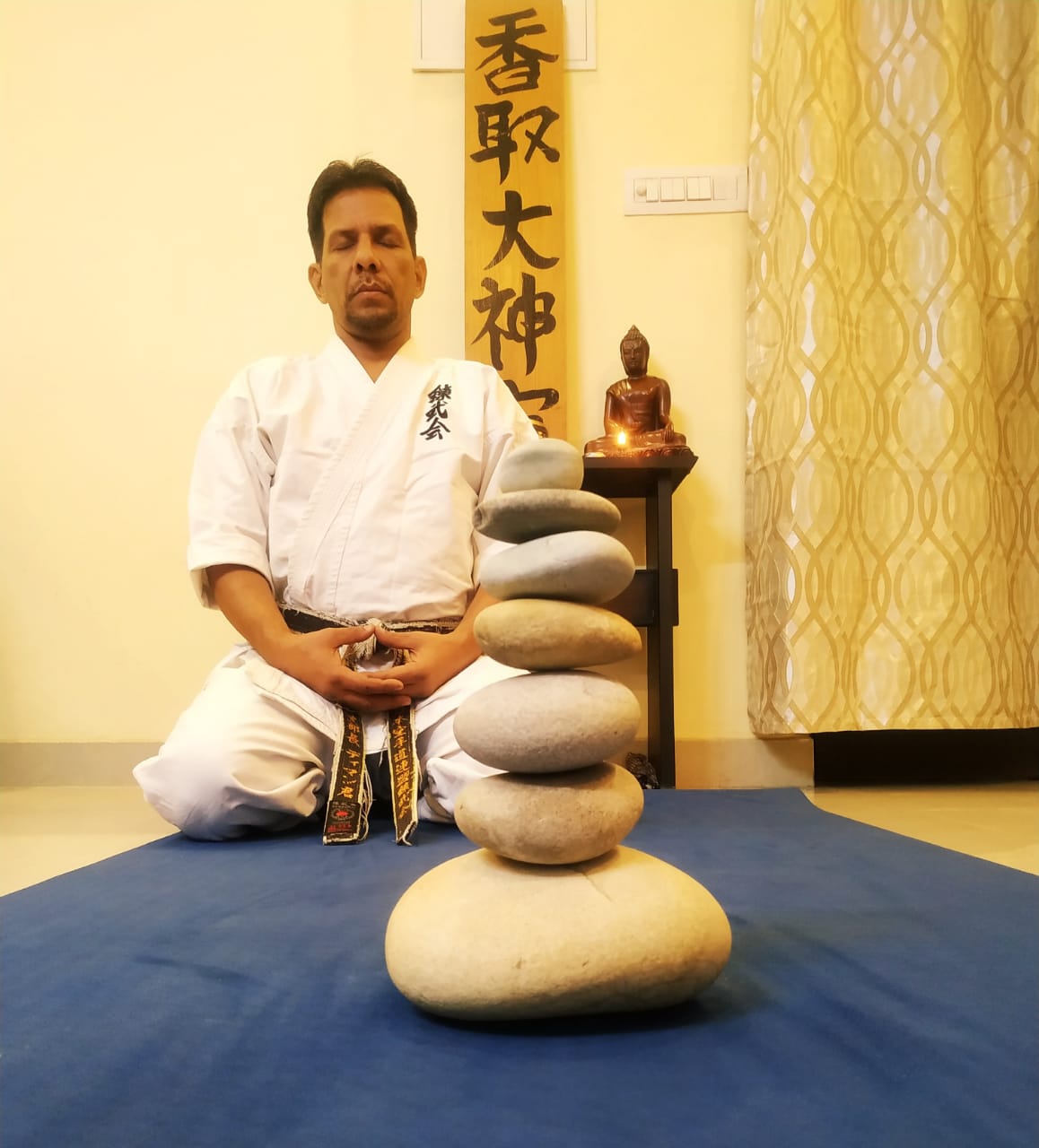
There are no guarantees in life .you cannot be assured that you will always be safe and comfortable . Sometimes you Will fail. However , from failure you can learn a great many things . You learn how to get up again , and you grow from this experience.
Even though we cannot avoid mistakes , we can try to avoid making the same mistake twice. This is a very important point .we must not use our imperfection as an excuse to continue to make the same mistakes. It might happen that you may repeat the same mistake one more time , but that is when you must ask yourself : ” why have I done this again ? What is my weakness ?”.
The most important thing is not to be afraid of failure . Don’t give up. You can take your time , but you must always get back up. Sometimes you get up quickly ,and sometimes you suffer. However , when it is time , you still have to get up. That’s is Daruma Daishi real lesson.
This is the real meaning of Daruma juku logo. is a very important part of our Daruma juku- Karate-Do Renbukai
